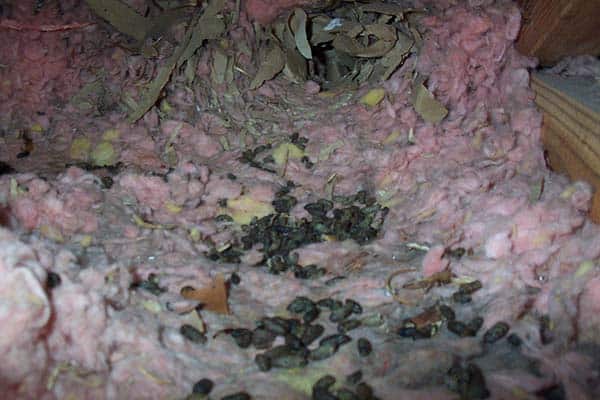What Exactly Does Squirrel Poop Look Like?
You will typically find squirrels running up your trees or even through your backyard. They don’t become much of a problem until they end up in your home, usually in the attic. When they do get inside your home, they can be downright troublesome. In the majority of cases, you will find unpleasant feces dropped all around your home as evidence that they are in your property. However, you have to know what squirrel poop actually looks like to identify if you have an infestation. Below, we will be going over some of the essential tips to determine if you have squirrel poop on your property.
Related article: Squirrel Poop vs Rat Poop
Tips To Identify Squirrel Poop
There are over 350 species of squirrels in the world. Because of this, you will find a lot of variation between the various feces being dropped, depending on where you are located. The size, shape, and composition can be different depending on the species of the squirrel. For instance, the feces from the Eastern Grey Squirrel is usually around (1 x. .4 cm) in size. In contrast, the wastes from the Tassel-Eared squirrel are typically (0.6 x 0.3 cm) in size.
Similarities
Only having squirrel droppings in your home can be evidenced enough that you have a squirrel infestation in it. That being said, there might be different kinds of pests running around your house. Therefore, the only way to know if you have squirrels in your home is by being able to identify the feces accurately. For instance, you might need to be able to identify the difference between rat and squirrel feces accurately. Each of these feces can look very similar because they are typically the same color, which is dark brown or even black. That being said, there are slight differences between the different feces of the two pests when it comes to the shape. Feces from rats are typically shaped like a spindle. Whereas, feces from squirrels are either formed like a spindle or clumped together depending on the source of their food. If the squirrel is eating food with a lot of moisture present, they are likely going to have much more clumped together feces. Whereas, if they are primarily eating foods with low moisture, they are likely to have feces that have pointed ends similar to deer feces. Knowing the difference between the various feces is vital to identify them accurately. Thus, it is always recommended to consult with an experienced professional in wildlife to really figure out what pest is entering and excreting feces all-around your home.
Alternate Identifiers
Feces is not the only way to identify whether or not you are experiencing a squirrel infestation. In fact, there might be other ways like noise. Noises can be an indicator of having some pest infestation in your home. It would help if you listened for squeaking, scurrying, and even chewing. All of these might be present in your home if you are experiencing an infestation of some kind. That being said, just about every pest is likely to make these types of noises if they are present in your home.
Another suitable identifier would be nesting. Nests can be evidence that you have some pests living in your home. Typically these nests will consist of materials brought in from the outdoors. Therefore, you should check for leaves, grass, feathers, and other materials that are brought in from outside.
Related article: Identifying Squirrel Poop
Squirrels can be ubiquitous, whether in the country or in an urban setting. They are typically found in the attic of houses where they will set up their nest. If you hear them scampering around above you and/or scratching in the late evenings and early mornings, you might have a squirrel infestation. Luckily, they are typically easier to trap using the correct techniques by placing mounting traps at their entry and exit points in your home.

